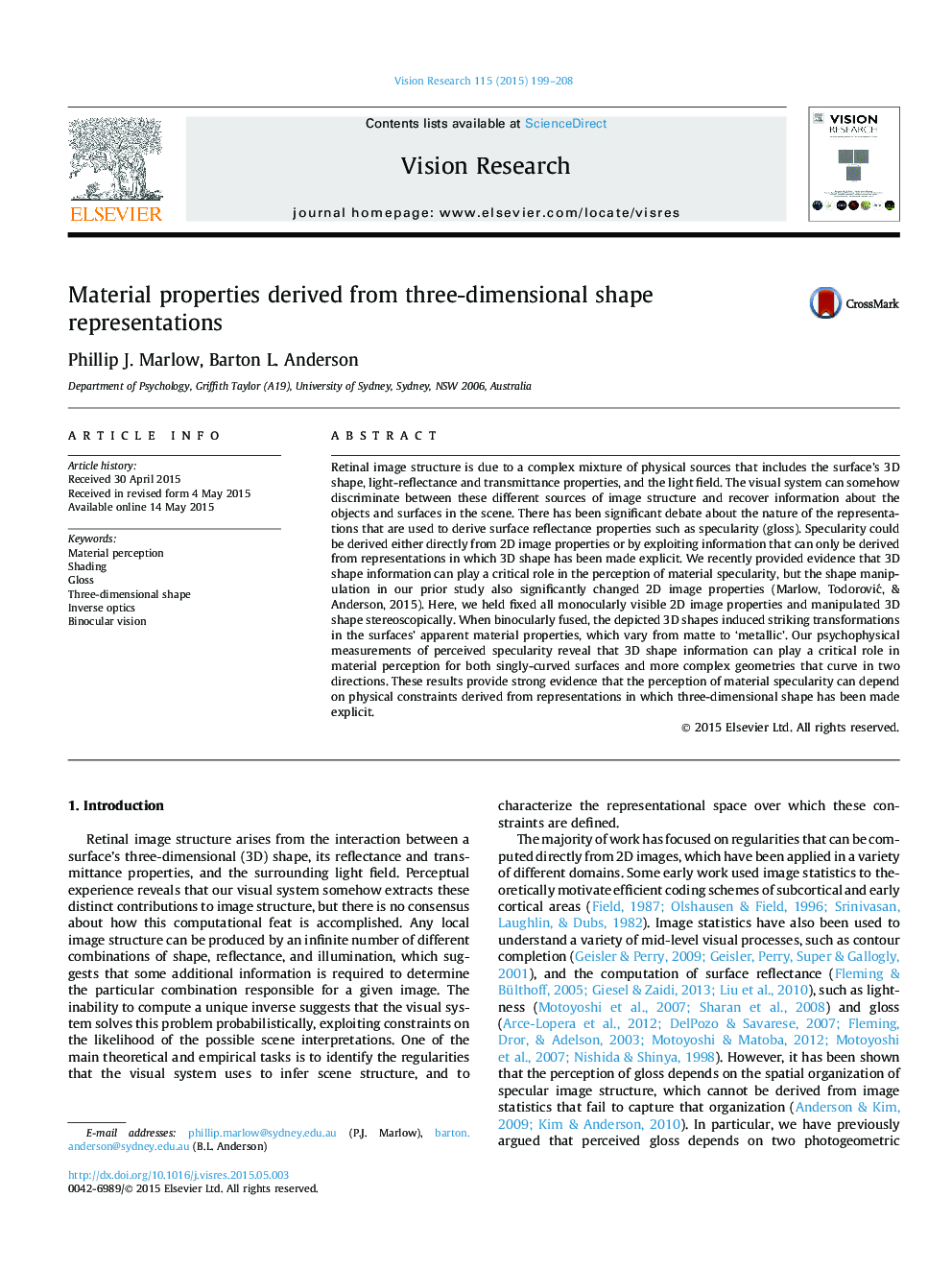| کد مقاله | کد نشریه | سال انتشار | مقاله انگلیسی | نسخه تمام متن |
|---|---|---|---|---|
| 6203103 | 1263357 | 2015 | 10 صفحه PDF | دانلود رایگان |
- The same image can be perceived as either a matte or specular material.
- Perceived material dramatically switches with the perceived 3D shape and lighting.
- Results generalize to doubly-curved surfaces and to stereopsis.
- Visual system computes material properties at the level of 3D shape representation.
Retinal image structure is due to a complex mixture of physical sources that includes the surface's 3D shape, light-reflectance and transmittance properties, and the light field. The visual system can somehow discriminate between these different sources of image structure and recover information about the objects and surfaces in the scene. There has been significant debate about the nature of the representations that are used to derive surface reflectance properties such as specularity (gloss). Specularity could be derived either directly from 2D image properties or by exploiting information that can only be derived from representations in which 3D shape has been made explicit. We recently provided evidence that 3D shape information can play a critical role in the perception of material specularity, but the shape manipulation in our prior study also significantly changed 2D image properties (Marlow, TodoroviÄ, & Anderson, 2015). Here, we held fixed all monocularly visible 2D image properties and manipulated 3D shape stereoscopically. When binocularly fused, the depicted 3D shapes induced striking transformations in the surfaces' apparent material properties, which vary from matte to 'metallic'. Our psychophysical measurements of perceived specularity reveal that 3D shape information can play a critical role in material perception for both singly-curved surfaces and more complex geometries that curve in two directions. These results provide strong evidence that the perception of material specularity can depend on physical constraints derived from representations in which three-dimensional shape has been made explicit.
Journal: Vision Research - Volume 115, Part B, October 2015, Pages 199-208
